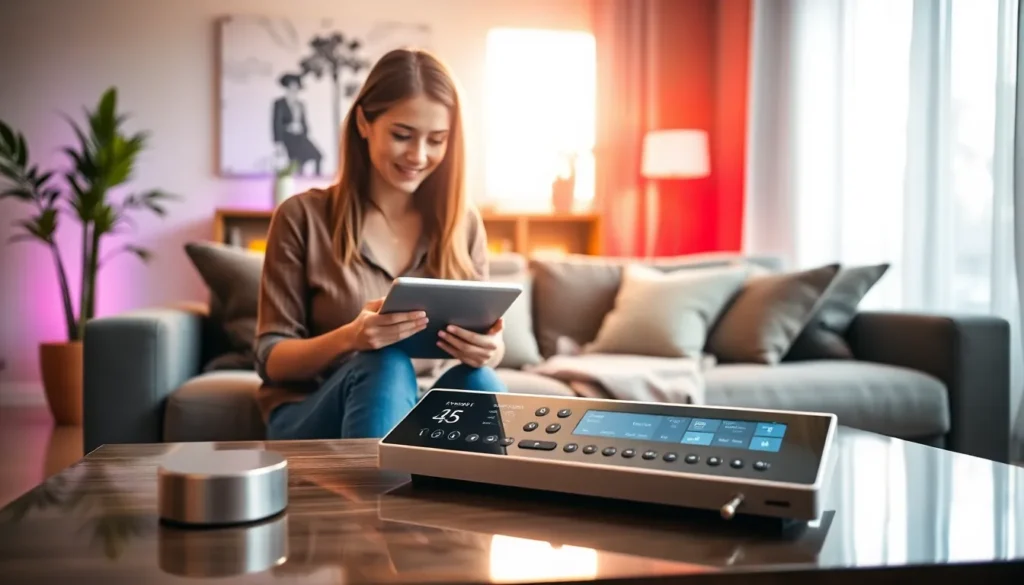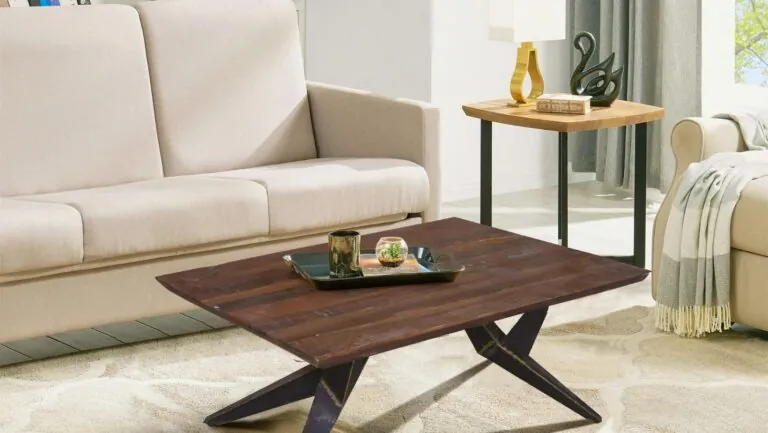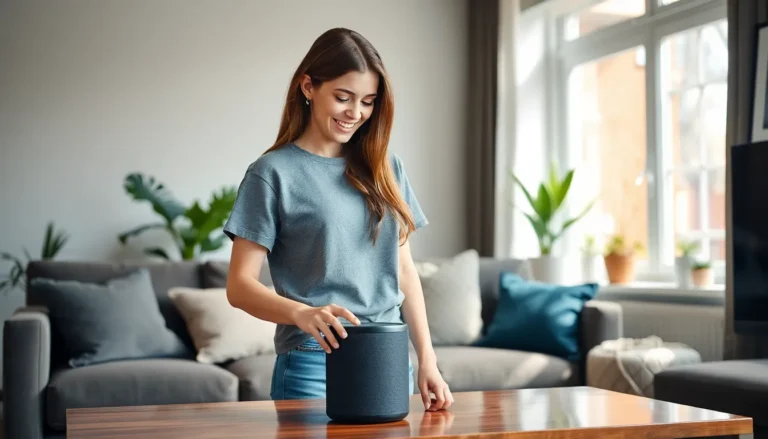Imagine waking up to the gentle glow of your lights slowly brightening like the sun rising over a sleepy horizon. With home automation scheduling, that dream can become reality. It’s like having a personal assistant who never sleeps, ensuring every device in your home is perfectly timed to your daily routine. Who wouldn’t want a home that practically runs itself?
Table of Contents
ToggleOverview of Home Automation Scheduling
Home automation scheduling allows users to control smart devices based on specific times and events. By setting schedules, lights can turn on at sunset, and thermostats can adjust in the morning. This function simplifies daily tasks and enhances comfort at home.
Flexible programming options offer customization to fit various lifestyles. Users may create routines for when they wake up or go to bed, ensuring a consistent environment. For instance, kitchen lights might brighten during breakfast time while outdoor lights activate at dusk.
Energy efficiency represents another advantage of home automation scheduling. Programs can optimize energy use by avoiding unnecessary activation of devices. Scheduling the heating system to operate only when needed conserves energy and can lower utility bills over time.
Integration with other smart home systems further enhances the benefits of scheduling. Users can connect security devices to notifications, triggering alerts based on time or motion. Automation makes it easier to keep homes secure and energy-efficient.
Overall, home automation scheduling transforms routine household functions into seamless, automated processes. Streamlining daily activities creates a more enjoyable living space. With various applications, home automation scheduling proves valuable for modern households.
Benefits of Home Automation Scheduling

Home automation scheduling offers numerous advantages for modern households. Efficiency and convenience stand out as key benefits.
Energy Efficiency
Home automation scheduling greatly enhances energy efficiency. Smart devices operate only when needed, reducing unnecessary energy consumption. For instance, programmed thermostats adjust heating or cooling based on a homeowner’s daily routine. This optimization leads to lower utility bills, as energy usage becomes more targeted. Additionally, scheduled lighting can automatically turn off in empty rooms, further conserving energy. With these scheduling options, households experience improved sustainability while enjoying cost savings.
Convenience and Comfort
Convenience is a primary benefit of home automation scheduling. Automated routines eliminate the need for manual adjustments, allowing for a smoother daily experience. For example, lights can gradually brighten in the morning, mimicking natural sunlight and making waking up more pleasant. Scheduling also enables devices to function according to specific events. Homeowners can set coffee machines to brew at their preferred time, ensuring a fresh cup awaits them upon rising. Overall, strategic scheduling enhances comfort and simplifies everyday tasks, contributing to a more enjoyable home environment.
Key Features of Home Automation Scheduling
Home automation scheduling offers several key features that enhance user experience and functionality. These include intuitive interfaces and broad compatibility with smart devices.
User-friendly Interfaces
User-friendly interfaces simplify the interaction with home automation systems. Touchscreen controls, mobile applications and voice command options provide multiple ways to manage schedules. Users can easily set up routines, adjust settings and monitor device status from their smartphones or tablets. Visual cues and straightforward menus streamline the process, reducing technical barriers for non-tech-savvy individuals. Moreover, customizable dashboards allow users to prioritize their most-used features, enhancing efficiency and accessibility.
Compatibility with Smart Devices
Compatibility with various smart devices broadens the appeal of home automation scheduling. Most systems support an array of products, such as smart lights, thermostats, and security cameras. Users can integrate these devices into a cohesive network, enabling seamless communication between them. This synergy allows scheduling to occur across different device types. As a result, users can coordinate heating with lighting schedules or set security cameras to activate at specific times. Compatibility ensures that users can tailor their home automation setup to fit their unique needs.
Best Practices for Implementing Home Automation Scheduling
Effective home automation scheduling enhances daily routines. Implementing best practices ensures efficiency and convenience.
Setting Up Timers and Routines
Creating timers and routines streamlines everyday tasks. Users can schedule devices to operate at specific times, such as turning on lights at sunrise or adjusting thermostats before returning home. Establishing morning and evening routines can automate common activities, like brewing coffee or dimming lights for movie time. Regularly reviewing and updating timers helps maintain efficiency as life changes. Moreover, grouping devices under a single routine simplifies management, allowing users to control multiple devices with a single command. Consider energy-efficient schedules that align with usage patterns, avoiding activation during peak hours.
Utilizing Mobile Apps
Mobile apps serve as intuitive tools for home automation scheduling. Users can access their smart devices from anywhere, providing flexibility and control. Most apps offer customizable dashboards, which prioritize essential features for easy navigation. Notifications keep users informed about device activity, allowing them to make adjustments on the go. Scheduling options within the app enable the setup of specific timeframes for device operation. Furthermore, many platforms support integrations with voice assistants, making it easy to set routines using simple commands. Keeping the app updated ensures access to the latest features and security enhancements.
Home automation scheduling offers a transformative approach to managing daily routines. By syncing smart devices with individual lifestyles, it enhances convenience and comfort in everyday living. The ability to automate tasks not only simplifies life but also promotes energy efficiency, leading to cost savings.
With user-friendly interfaces and customizable options, homeowners can tailor their systems to fit unique needs. Regularly updating schedules ensures that automation remains effective as lifestyles evolve. Embracing this technology can create a more enjoyable and sustainable home environment, making life easier and more efficient for everyone.




